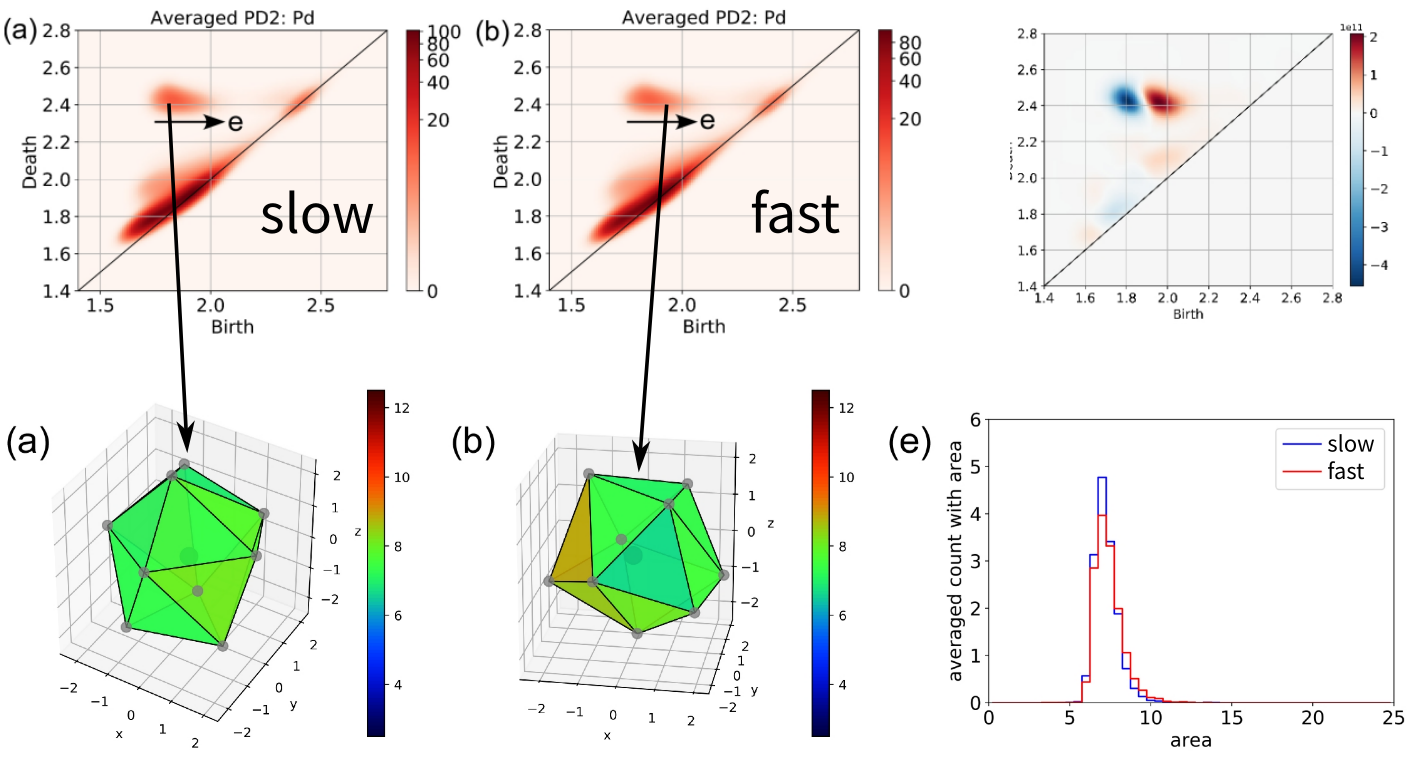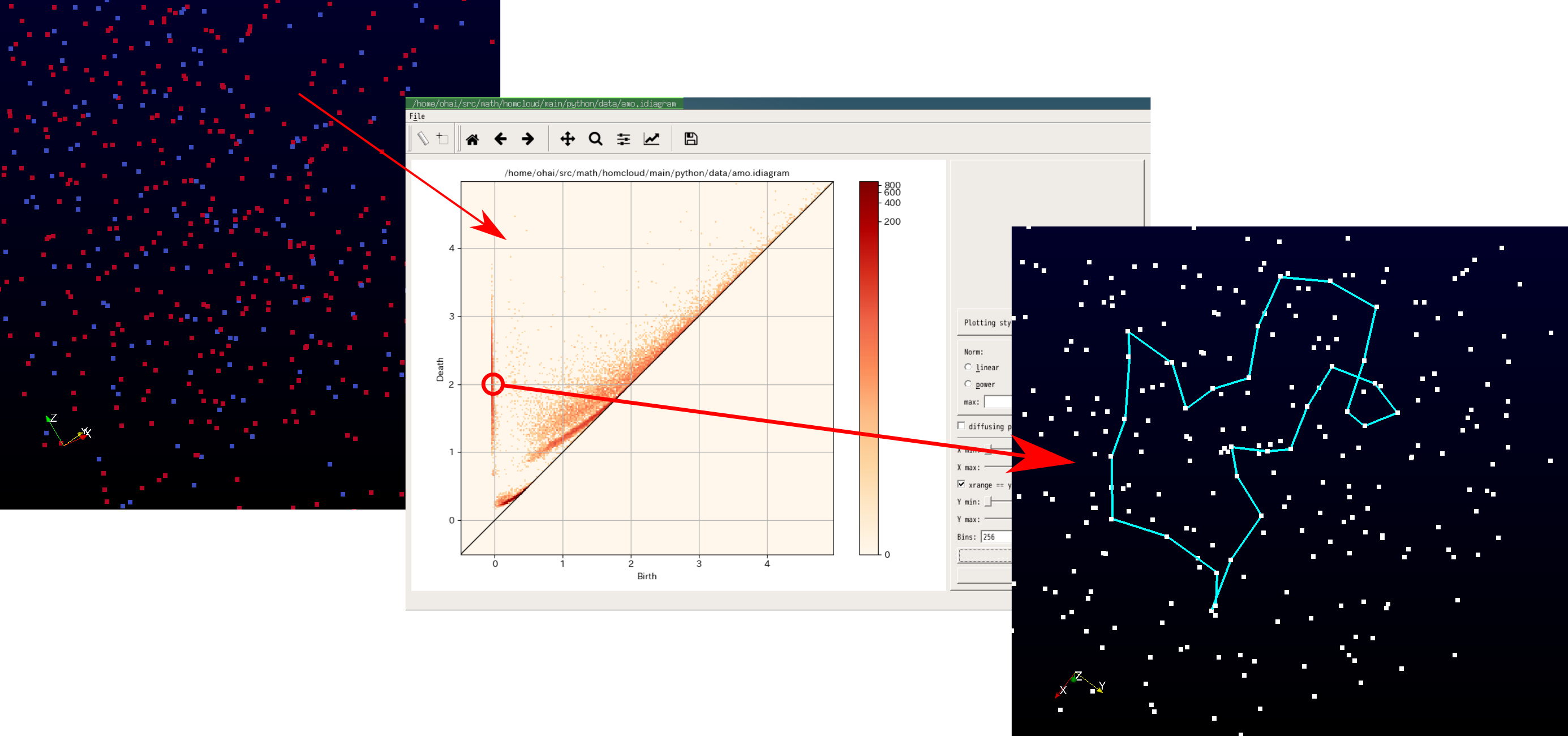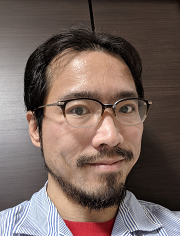Mathematical Science for Data Engineering
Staff
Research Topics
We work on topological data analysis (TDA), especially on the mathematical theory of persistent homology (PH) and its applications to materials science. We also lead the development of HomCloud, data analysis software based on PH, which is important to link theory and application. We also interested in applications of dynamical systems.
Mathematical theory of persistent homology
|
TDA enables us to utilize the mathematical concept of topology for data analysis, and the research is actively conducted from theory to applications. It does not follow a unidirectional flow from mathematical theory to application, and new mathematical problems often arise from applications. We work on such mathematical problems. I already have worked on inverse problem on persistence diagrams and field choice problem on persistent homology. |
 |
Applications of TDA
|
We work on the applications of PH to various fields. We are collaborating with researchers in the fields of materials science, meteorology, geology, structural biology, and computer-aided diagnosis. PH enables us to quantitatively describe the shape of data, and has a variety of applications. In particular, it is useful for the quantitative representation of disordered structures, and has been applied to materials science to analyze the atomic-level structure of glass, which is characterized by disordered structures |
 |
Development of HomCloud, data analysis software based on PH
|
In order to connect the theory of persistent homology with applications, data analysis software is indispensable. For this reason, we develop “HomCloud”, data analysis software based on PH. We focus on applications, and practical functionalities such as visualization, machine learning/statistics, and inverse analysis. HomCloud is a test platform to see if mathematical theories work effectively, and we are implementing ideas from our research as soon as possible. |
 |
Publication List
- Yohei Onodera, Shinji Kohara, Philip S. Salmon, Akihiko Hirata, Norimasa Nishiyama, Suguru Kitani, Anita Zeidler, Motoki Shiga, Atsunobu Masuno, Hiroyuki Inoue, Shuta Tahara, Annalisa Polidori, Henry E. Fischer, Tatsuya Mori, Seiji Kojima, Hitoshi Kawaji, Alexander I. Kolesnikov, Matthew B. Stone, Matthew G. Tucker, Marshall T. McDonnell, Alex C. Hannon, Yasuaki Hiraoka, Ippei Obayashi, Takenobu Nakamura, Jaakko Akola, Yasuhiro Fujii, Koji Ohara, Takashi Taniguchi and Osami Sakata. Structure and properties of densified silica glass: characterizing the order within disorder. NPG Asia Materials volume 12, 85 (2020). https://doi.org/10.1038/s41427-020-00262-z
- Akihiko Hirata, Tomohide Wada, Ippei Obayashi and Yasuaki Hiraoka. Structural changes during glass formation extracted by computational homology with machine learning. Communications Materials 1, 98 (2020). https://doi.org/10.1038/s43246-020-00100-3
- A.Suzuki, M.Miyazawa, A.Okamoto, H.Shimizu, I.Obayashi, Y.Hiraoka, T.Tsuji, P.K.Kang, and T.Ito. Inferring fracture forming processes by characterizing fracture network patterns with persistent homology. Computers & Geosciences 143, 104550 (2020). https://doi.org/10.1016/j.cageo.2020.104550
- Ippei Obayashi. Volume Optimal Cycle: Tightest representative cycle of a generator in persistent homology. SIAM Journal on Applied Algebra and Geometry 2(4), 508–534, (2018). https://epubs.siam.org/doi/abs/10.1137/17M1159439
- Ippei Obayashi, Yasuaki Hiraoka, and Masao Kimura. Persistence diagrams with linear machine learning models. Journal of Applied and Computational Topology 1, 3-4, 421–449, (2018). https://doi.org/10.1007/s41468-018-0013-5
- M. Kimura, I. Obayashi, Y. Takeichi, R. Murao, and Y. Hiraoka. Non-empirical identification of trigger sites in heterogeneous processes using persistent homology. Scientific Reports 8, 3553, (2018). https://doi.org/10.1038/s41598-018-21867-z
- Takashi Ichinomiya, Ippei Obayashi, and Yasuaki Hiraoka. Persistent homology analysis of craze formation. Phys. Rev. E 95, 012504, (2017) . http://journals.aps.org/pre/abstract/10.1103/PhysRevE.95.012504
- Ippei Obayashi, Shinya Aoi, Kazuo Tsuchiya, Hiroshi Kokubu. Formation Mechanism of a Basin of Attraction for Passive Dynamic Walking Induced by Intrinsic Hyperbolicity. Proceedings of the Royal Society A: Mathematical, Physical and Engineering Science, 472 (2190), (2016). https://doi.org/10.1098/rspa.2016.0028
